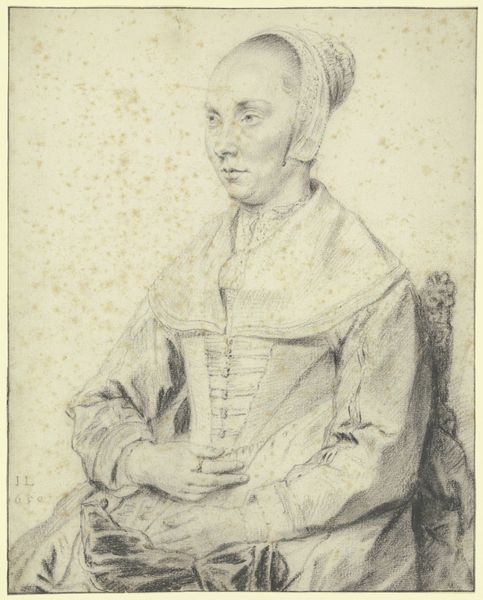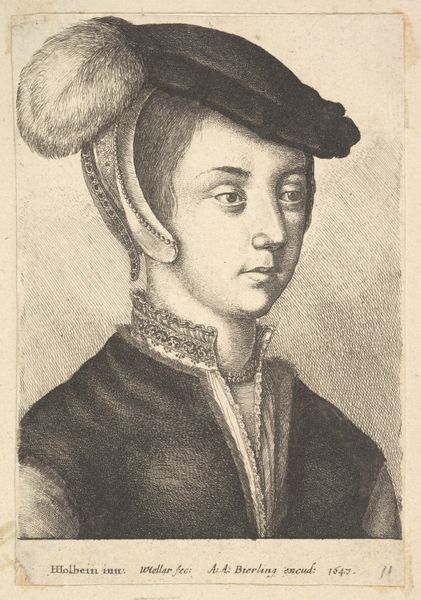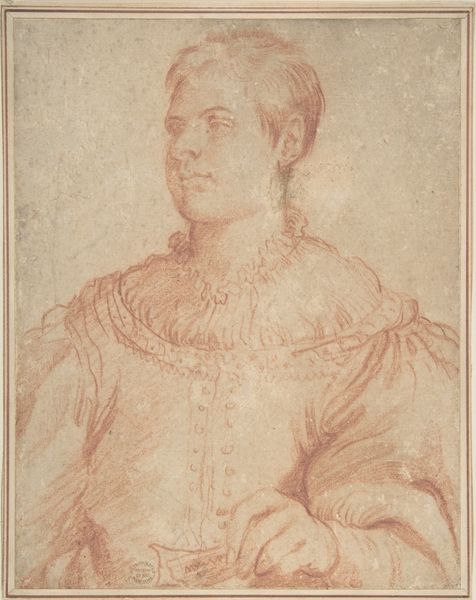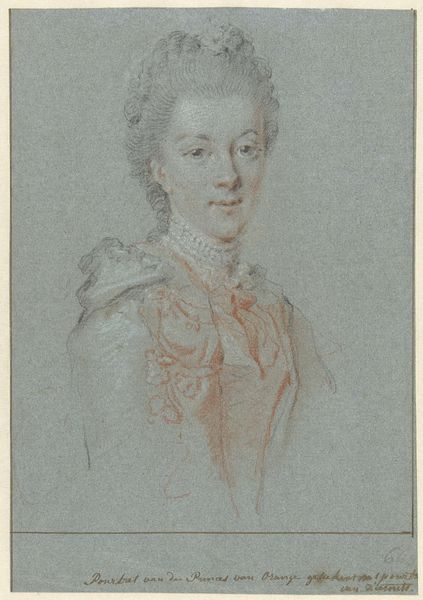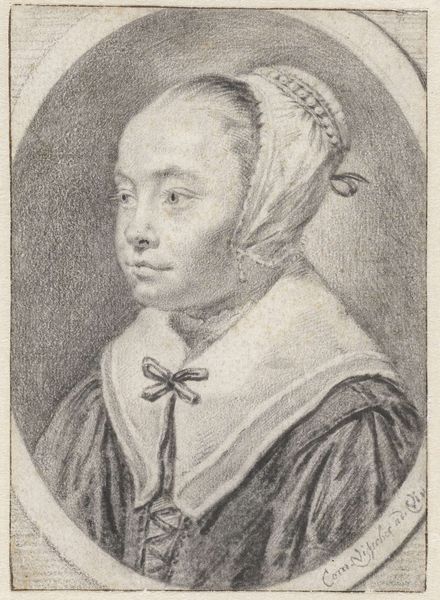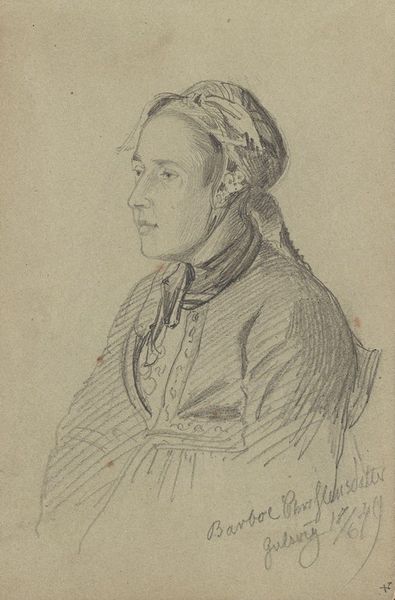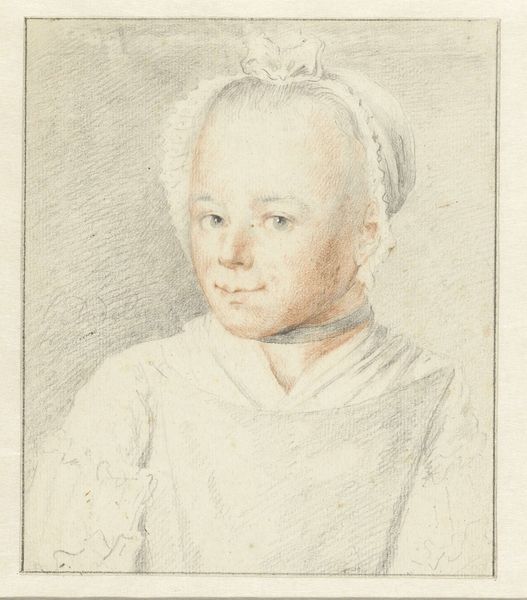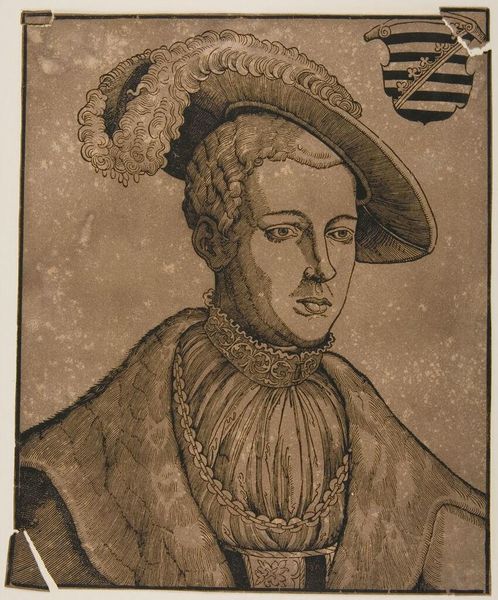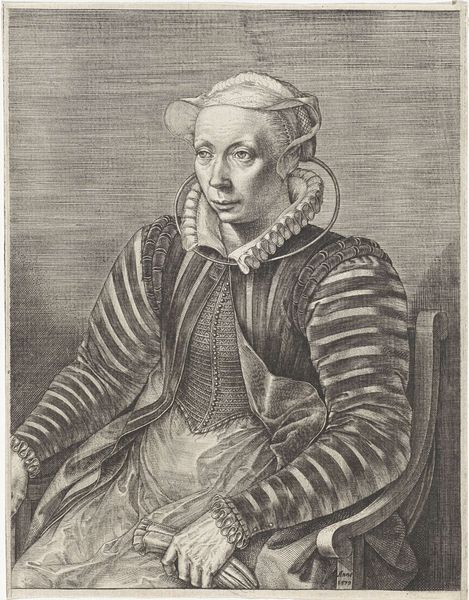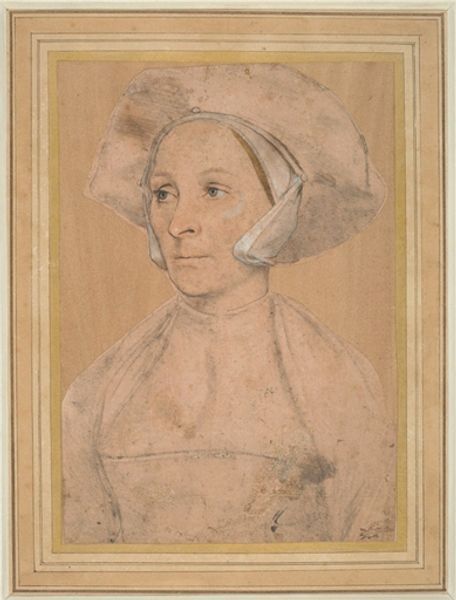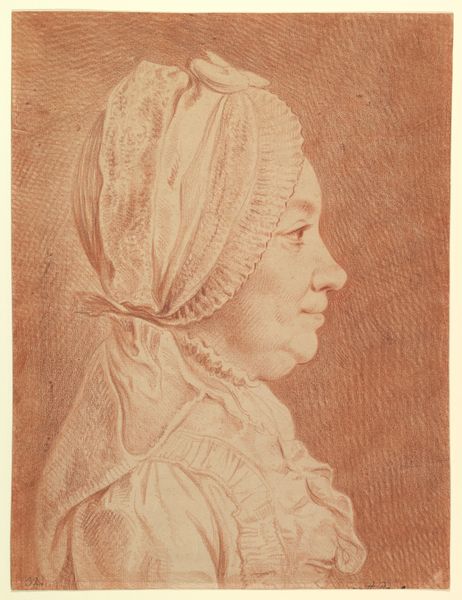
drawing, chalk
#
portrait
#
pencil drawn
#
drawing
#
netherlandish
#
toned paper
#
light pencil work
#
baroque
#
pencil sketch
#
charcoal drawing
#
pencil drawing
#
coffee painting
#
chalk
#
14_17th-century
#
portrait drawing
#
watercolour illustration
#
watercolor
Copyright: Public Domain
This portrait of a seated woman was made in 1659 by Jan Lievens, using graphite and potentially some black chalk. The artist has achieved a broad tonal range by layering the marks, manipulating the pressure, and allowing the paper to show through. The way Lievens has rendered the sitter’s garments tells us a great deal. Notice how the fabric of her sleeves seems almost weightless, due to the delicacy of the drawing. By contrast, the more densely worked graphite suggests the weight of the skirt gathered in her lap, and the heaviness of the carved chair she sits upon. The costume itself speaks to the sitter’s social position. While not extravagantly embellished, the details of her cap, dress and jewelry indicate a degree of comfort and status. Ultimately, this drawing is more than just a record. It speaks to the social hierarchies of the time, encoded in the way the sitter is dressed, and the quality of materials on display. By attending to these details, we recognize the degree to which art and craft are always interwoven.
Comments
No comments
Be the first to comment and join the conversation on the ultimate creative platform.
